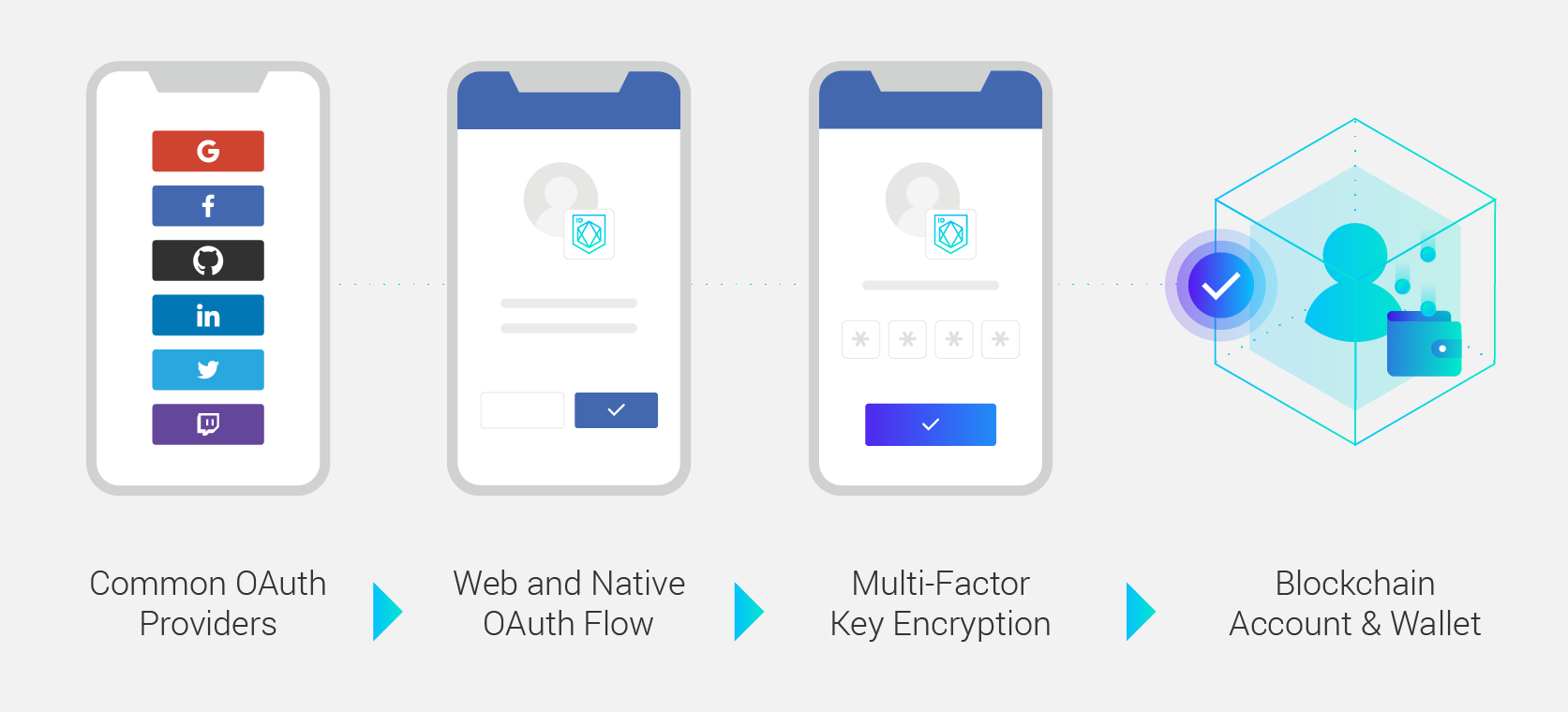ORE ID allows anyone to access your dApp with one-click sign up and blockchain account creation - using a login flow that they are already familiar with. ORE ID supports Google, Facebook, Github, Linkedin, Twitter, Twitch, and practically any other OAuth-enabled login provider.
With ORE ID, users of your web or mobile app get an on-chain account upon first sign-in. Their private key is encrypted with a PIN of their choosing and stored for them so they don't have to remember their blockchain accounts or keys.
ORE ID also serves as a blockchain wallet for your your users. Your app can request a user to sign a transaction using their PIN to decrypt their keys.
ORE ID is the easiest way to add support for Scatter, Ledger Nano S, Metro and every other EOS wallet that supports the new Transit API standard. Just add our eos-auth library and your app will instantly support these popular wallets.
ORE ID removes the friction between your app and your future users.
Apply here for early access
For Javascript apps, install the npm client module
npm install eos-auth
Call login and specify a provider (facebook, scatter, etc.) After login, your app will receive the user's blockchain account name (which maps to public/private keys). The user's info will automatically be stored in local state (cookie, etc.) and will be restored the next time the user uses your app. You can also call the user endpoint at any time to get the user's basic identity info (e.g. name, email, avatar picture)
When your app needs the user to sign a blockchain transaction, you just specify the chain name (e.g. eos_main) and chain account if you know it. If you don't know which EOS blockchain accounts the user has or in which wallet they are stored, you can call the discover function that will prompt the user to unlock their wallet. Public keys stored in the wallet will be automatically remembered so you can help the user find the right wallet and keys quickly the next time they need to repeat a transaction. Awesome!
The account is a blockchain account that can be easily viewed on the public blockchain using a block explorer.
The user's account's private key can be transferred to his offline wallet when requested.
Search the chain for account details and token balances like this - http://explorer.openrights.exchange/accounts/1pxnubvyqceu
//Initialize the library
let oreId = new OreId({ appName:"My App", appId, apiKey, ... })
//Start the OAuth flow by setting browser to URL returned by login
let loginResponse = await oreId.login({provider:'facebook'});
window.location = loginResponse.loginUrl
//Get the user's info given a blockchain account
let userInfo = await oreId.getUserInfoFromApi(account)
//Start the ORE ID signing process
let signResponse = await oreId.sign(signOptions)
window.location = signResponse.signUrl
OR
//Start the signing process using local wallet app
let signResponse = await oreId.sign({provider:'scatter', chainNetwork:'eos_kylin', transaction, ...})
console.log(signResponse.signedTransaction)This library includes Express middleware that you can use to simplify handling the callbacks from the ORE ID service. It extracts the results from the /auth and /sign callbacks and attaches info to the request object (e.g. req.user)
app.use('/authcallback', authCallbackHandler(oreId) );Take a look at examples/express for a complete example of use.
Refer to the examples folder for the following sample projects
-
ReactJS - A simple ReactJS website that includes React Login button component
-
React Native - A React Native app that includes a React OAuth flow modal component
-
Express Server - A simple Express server that includes the use of middleware to automate handling of callbacks

